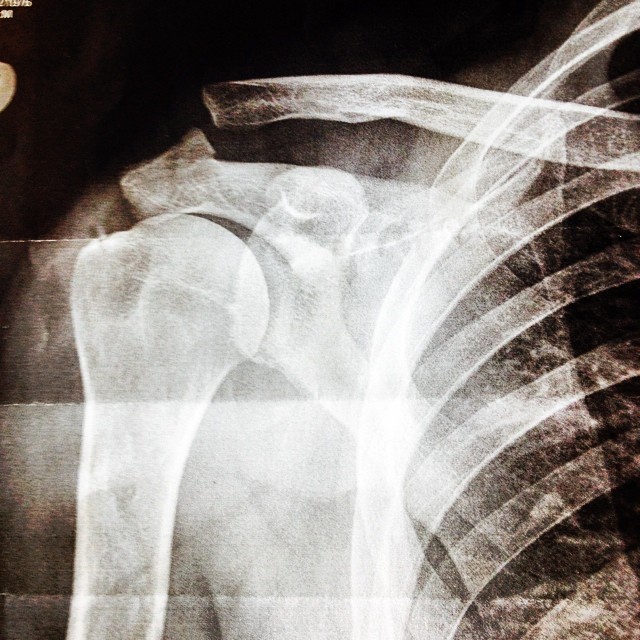Shoulder separations are a relatively common shoulder injury. The shoulder joint is really best described as the ball and socket joint of the gleno-humeral joint. Shoulder separations actually don’t typically involve the ball and socket joint but rather the acromioclavicular joint. This is the joint made up of the outer tip of the clavicle (collar bone) and the roof or outside corner of the shoulder girdle which is called the acromian.
The most common mechanism of injury that produces an AC separation is a fall onto the outside “point” of the shoulder. This mechanism causes a depressive force on the scapula.
AC separations are classified by the degree of injury, specifically the number of ligaments and soft tissues that are damaged at the time of injury. Types 1 and 2 equate to mild and moderate separations. They don’t produce any deformity other than swelling and treatment is non-operative. Type 3 AC separations occur when the 2 main ligaments about the end of the clavicle are disrupted. With the loss of those ligaments (coraclavicular and acromioclavicular) there is separation of the clavicle and acromion. The appearance is that of elevation of the clavicle when in actuality the shoulder joint drops downward relative to the clavicle. More severe grades of AC separation, 4, 5, and 6, involve greater degrees of separation and more importantly are the result of a greater disruption of soft tissue envelope surrounding the end of the clavicle.
Treatment for grade 3 AC separations spark some debate. The obvious deformity would seem to indicate the need for surgical repair. But in our practice the vast majority of Grade 3 separations are treated non-operatively and the bulk of those patients return to a very high level of function. However, the prominence of the tip of the clavicle is permanent. If, after several months, the sight of that prominence is not tolerable, or there is residual pain or weakness, AC joint reconstructive surgery can be performed. We, at Active Sports Medicine, have had good success with that procedure.
Higher grades of AC separation are usually treated operatively because pain, deformity and shoulder disfunction are for more significant than what is experienced with grade 3 AC joint separations.




